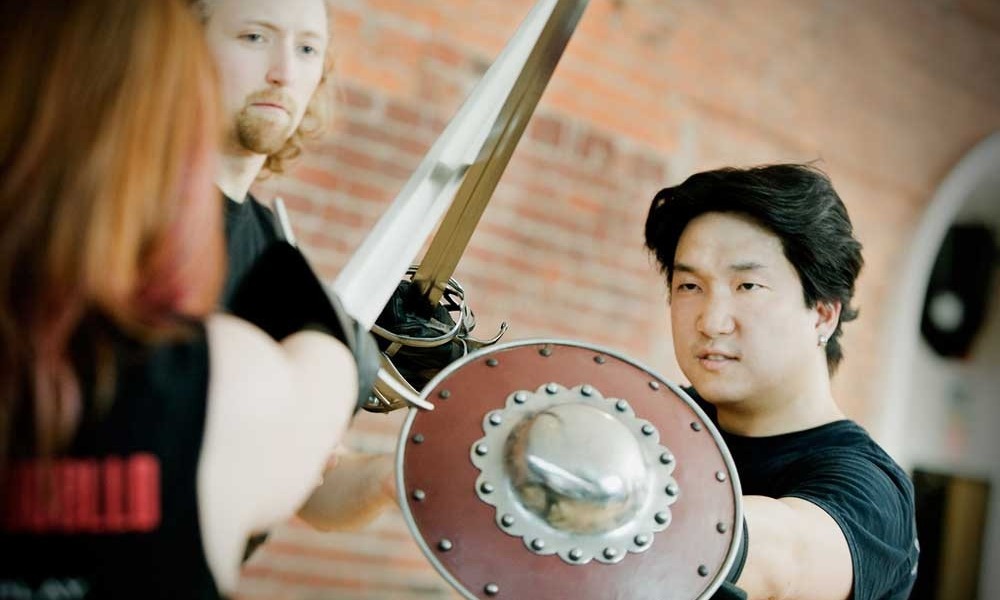Academie Duello was founded on two tenets:
- Proper Arms
- Proper Respect
The purpose of these tenets was to provide a guiding light and governing principle for the way we pursue and practise our art, as well as remind us to do so more authentically. What I mean is, our goal was to get as close to the martial art of the renaissance and middle ages as possible — without actually killing anyone.
Working from historical fighting manuals does not, in itself, create authentic practice. It’s very easy to recreate plays on a page and recite theory without ever grasping the vibrant and fluid art. Images and actions presented by historical masters are exemplars. They show a view of the art in a particular setting and context, not the art itself. If you want to truly touch an art you have to be practicing it on a more internalized level. You need to live within the context of the original art as much as possible. The more you can connect with the true tools of the art and its true purpose, the closer your practice will come. Then you will find that examples that come from your own practice match those of historical masters. Now the manuals can serve as a confirmation that you are on the right track and a as a litmus test for the flaws.
This is where the tenets come in.
Proper Arms
Always use the most accurate simulators of the weapons and armour for the martial art you are practicing.
The weapon is your first teacher. Only through understanding how a sword truly moves and responds will you be able to conceive of the art that wields it. The techniques of the modern Olympic epee are not best for the rapier, and the techniques practiced with the bamboo shinai in Kendo are quite different from those practiced with the sharpened steel katana even though they come from the same origin.
Proper Respect
Respect the deadliness of the weapons and the deadliness of an opponent using proper technique.
Though we practice and compete with blunted blades and do body to body work with control and care, it is important to always maintain awareness that the real weapon is sharp and contact with your opponent potentially deadly. When you begin to see your weapon as a point scoring stick, you will stop practicing a martial art and start playing a game.
Primary sources such as fight books (the names my students probably know being Capo Ferro, Marozzo, Fiore) are fantastic to draw upon for knowledge, inspiration, and a reflection of how people truly lived and died by the sword. Yet we must work both in and away from these sources to breathe new life into our art. If we only recreate the page, and allow ourselves to be overly constricted in our exploration, it will remain dead. As revivalists we make choices about the art that we want to bring to life. I want to keep the martial authenticity of the art alive, so these tenets are essential to my practice. Many set other rules and governing principles around their practice with different goals and aims in mind. These rules change the art that is practiced. The further they are from the rules of the past, the further the art will be. This does not mean the art that they create is any more or less valid. It’s simply different. Though it may not reflect the art of the past, it is alive. I think that in itself is extremely valuable.
So in your martial practice, consider the goals of your practice and exploration of the art. Then consider the context where you truly apply that art and the rules that govern it. These probably have more of an impact than any teacher or source that you are working with.
